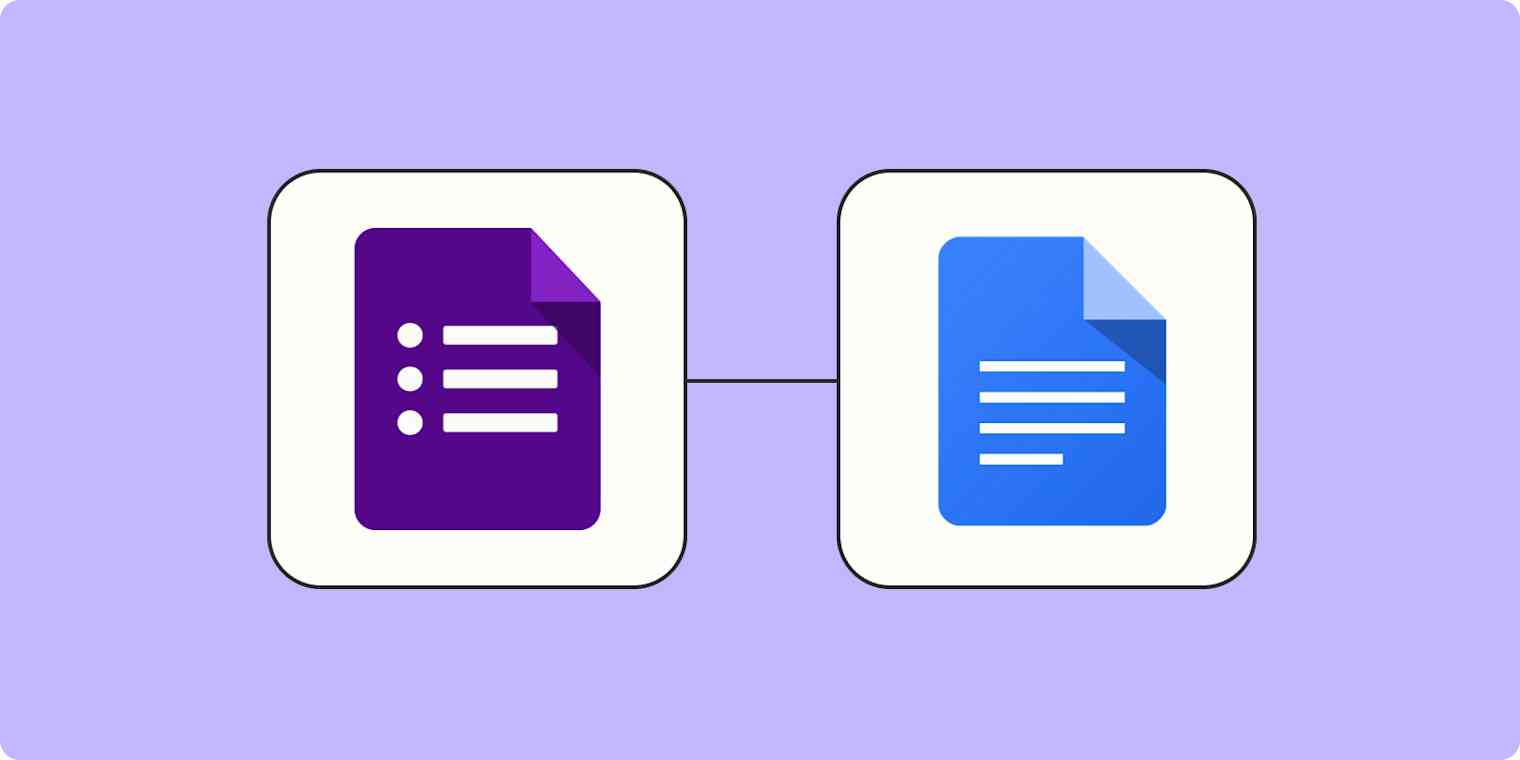

Here's a good rule: any time you find yourself copying a document to reuse over and over again or find yourself filling out blanks in a document, it's time you can save with automation. Zapier lets you automatically fill out Google Docs templates based on triggers from other apps.
Custom apps made easy Use Zapier Interfaces to design custom apps and client portals for free, without coding.My team at Slack used Google Docs to prepare all our art briefs for our blog. They were designed to be seen and used by dozens of people, and creating a new one was a five-to-ten-minute process—which added up when we did it a dozen times a week. That process now takes the team about a minute. Here's how we did it with Zapier.
Zapier is an automation tool that lets your apps talk to each other. Check out this Zapier demo to learn more about how it works.
The best place to begin is at the end—figure out what you want your final document to look like, and then build a template based on it. Use images, formatting, and whatever else needed to make it scannable and useful for everyone that uses it.
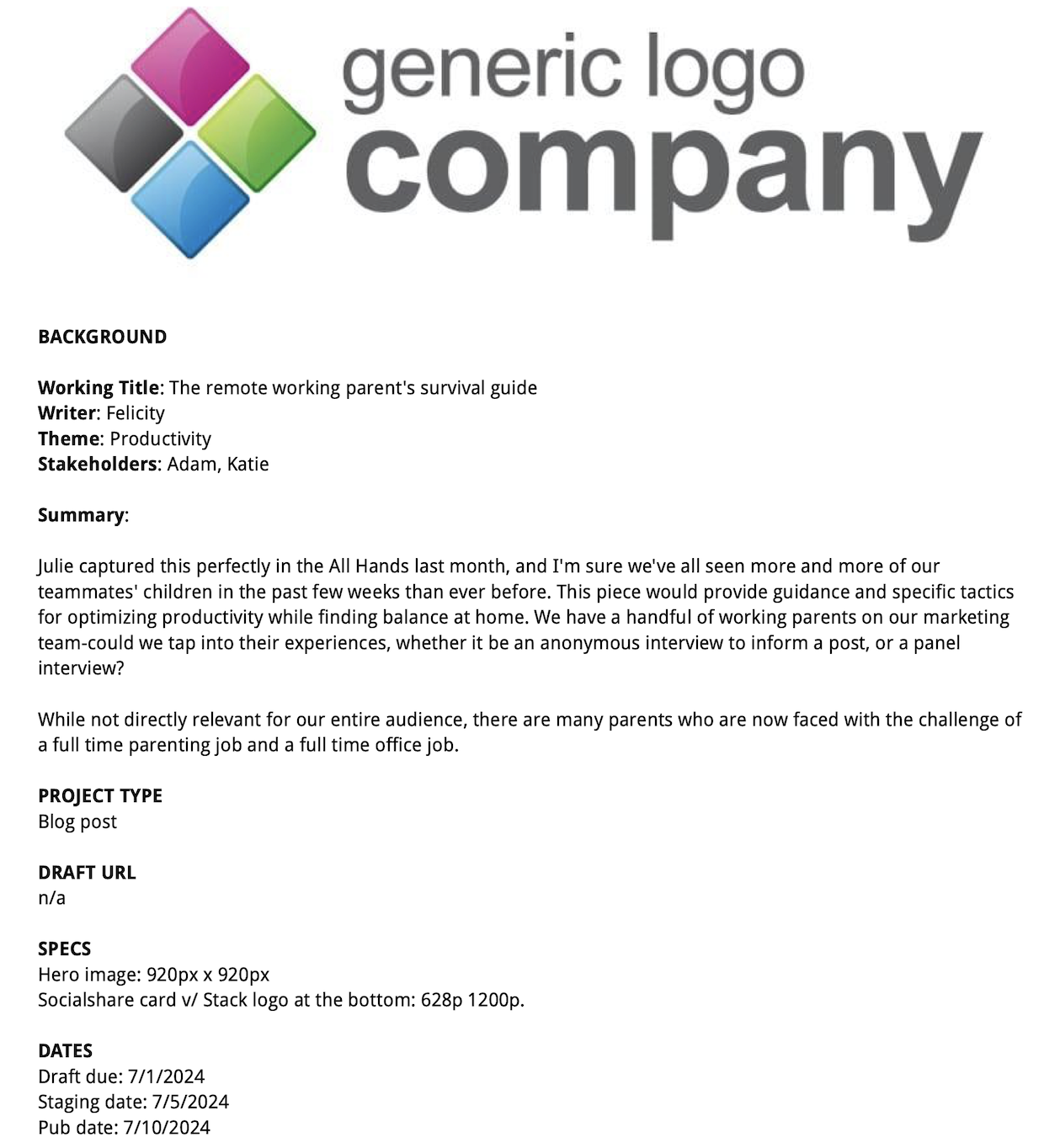
Next, create a new questionnaire with a field for each blank you need filled in the final document, using Google Forms. Give each question a descriptive title you can use later in the results. Each title needs to be one word or multiple words separated by a character (like Writer_Name ).
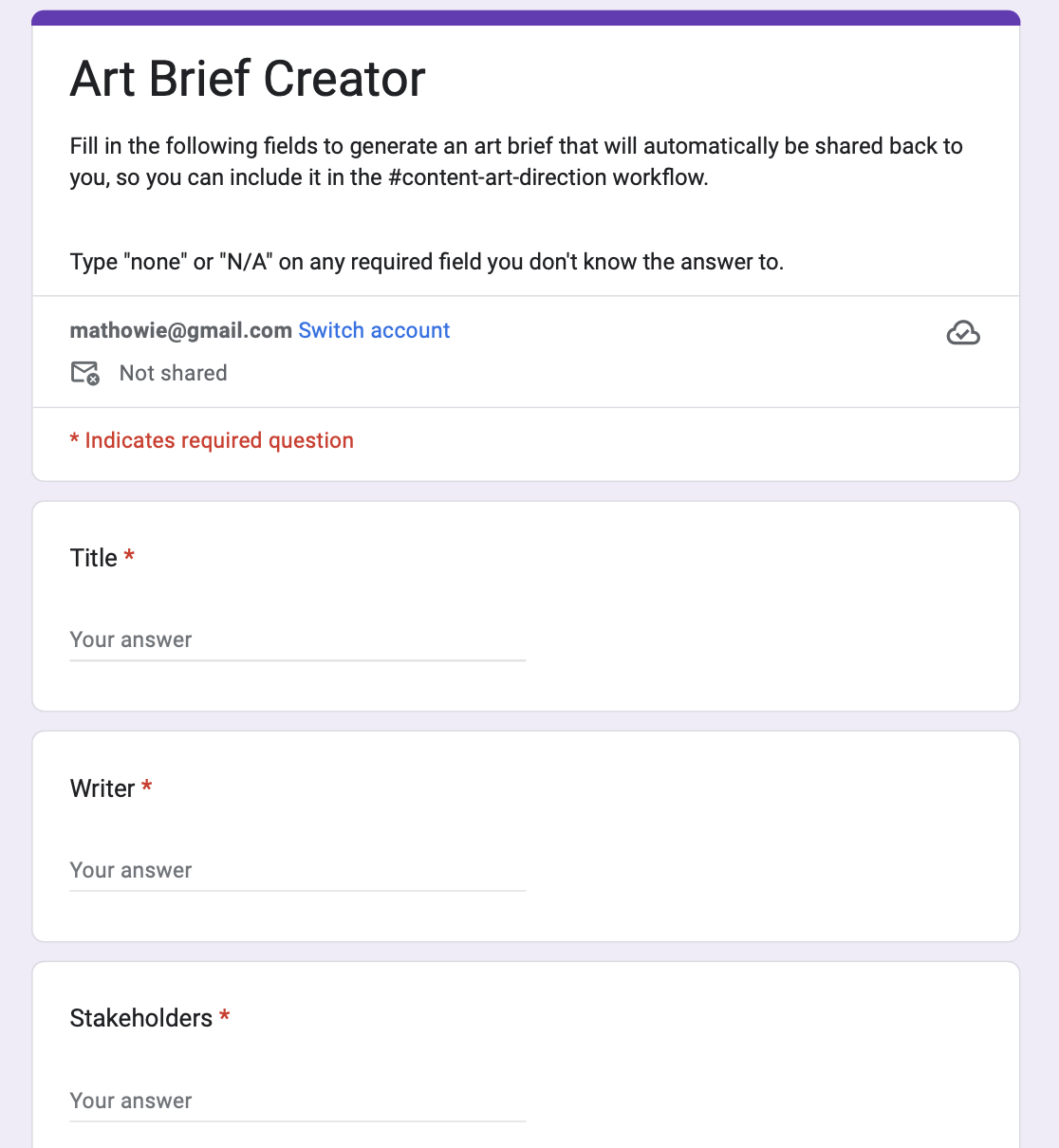
Be sure to put instructions in your form that blank fields will require an answer (like N/A or none) and set every field to required.
Go into your new Google Form's Settings, and set Collect email addresses to Verified. You'll use this later to alert users when the finished product is ready.
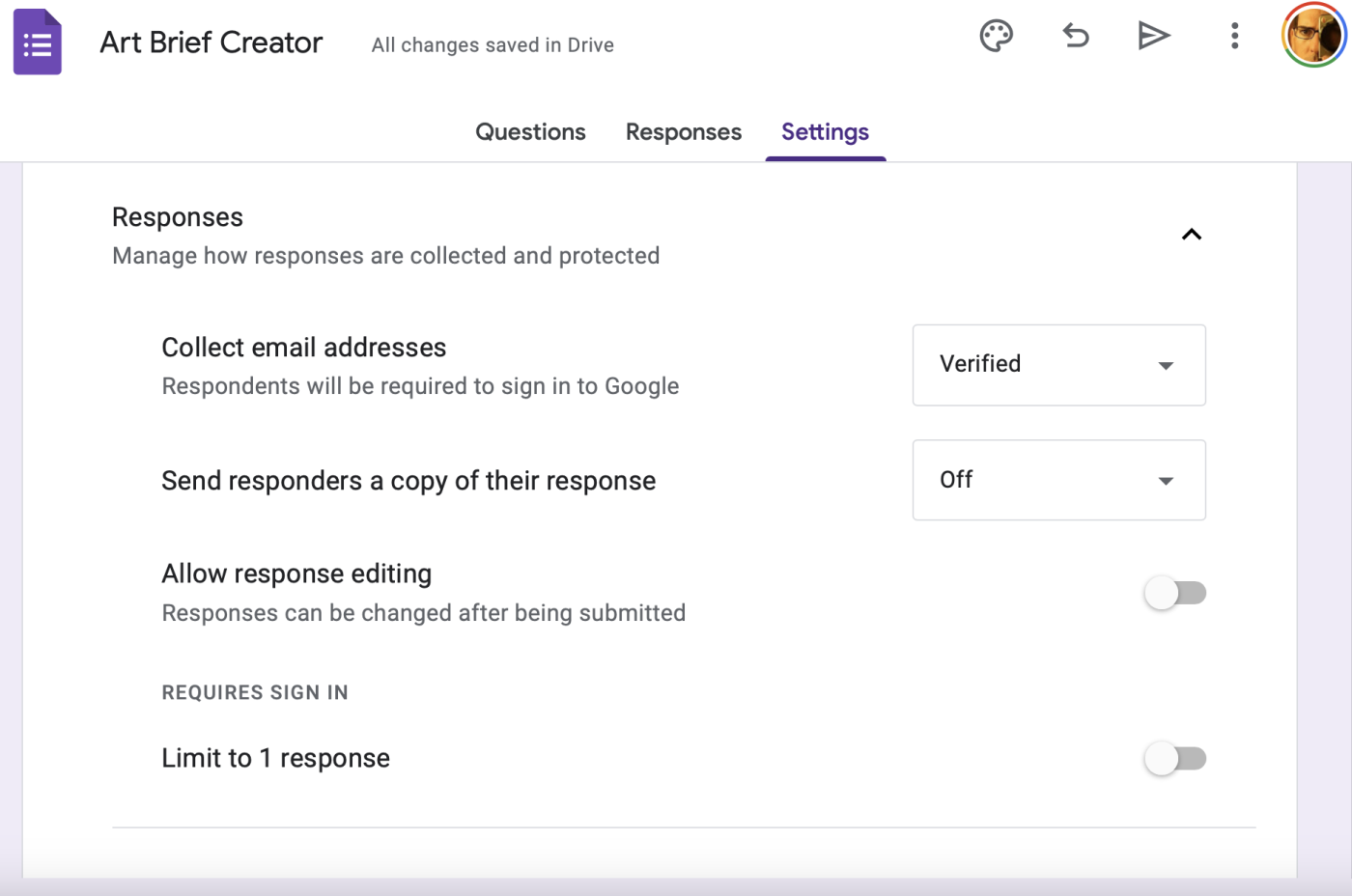
Preview your Google Form, and fill it out with sample data to capture your first submission. You'll use your sample data from the Google Form to properly set up this Zap.
Create a new Zap from scratch. Select Google Forms as your app and New Form Response as the event. Then, connect your Google Forms account and select the form you just built by name.
Run a test to make sure Zapier can find your sample form responses, and then it's Google Docs time.
Make a copy of the Google Doc you designed in the first step. Give this template doc a descriptive title you can easily find in Zapier.
Wherever you'd like the answers from your original Google Form to appear in this Google Doc, type each question's title in the doc surrounded by curly brackets (two on each side of the title). These will be replaced with real data in the next step.
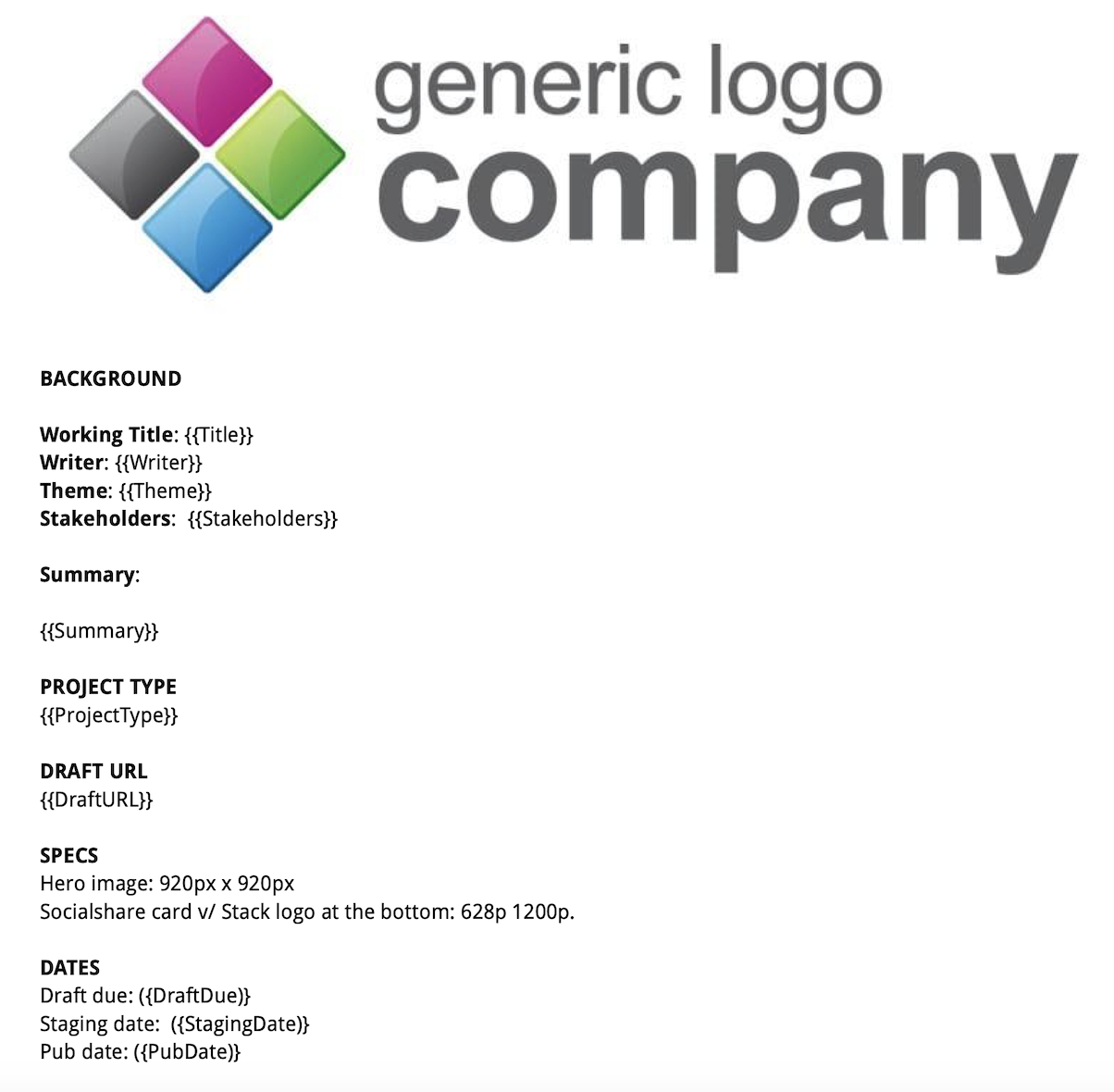
Go to Zapier and add another step to your Zap. Select Create Document from Template in Google Docs.
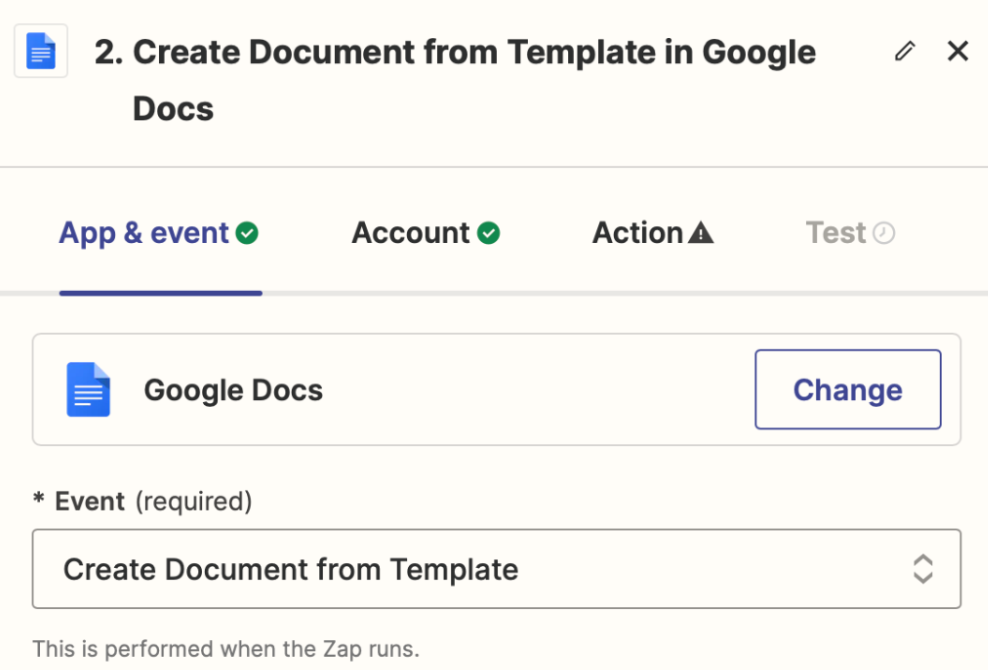
Then, fill out your Google account details just like the previous section. Choose the template you just built as the Template Document.
Customize your new document by giving it a New Document Name (use the title from your first question in the form), and change your Sharing Preference to something fairly open so others outside your organization don't need to request access to read it. Then you'll need to match each template field found in the doc with a field from your Google Form. It's a little tedious if your form has lots of questions, but you only need to set this up once.
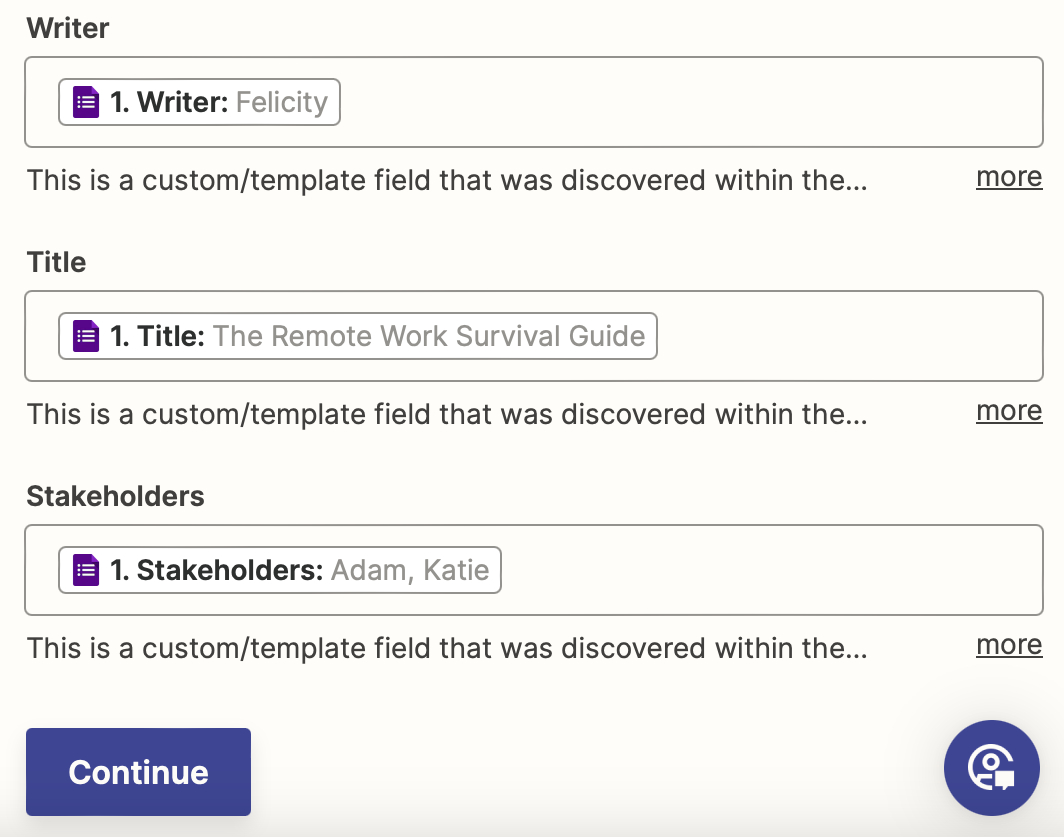
Run a test to make sure everything looks good. We're almost done!
The last step is to let someone know whenever they submit your form that their new Google Doc is ready, which you can do in a variety of ways (email, Slack, etc.).
When we generate a new Google Doc from our template, we need to let the person who filled out the form know it's ready, and for that we'll use Slack.
Add another step to your Zap to Find User by Email in Slack. This works if your Google email login matches the email you use in Slack (something a lot of companies automate with Google Apps and Slack SSO).
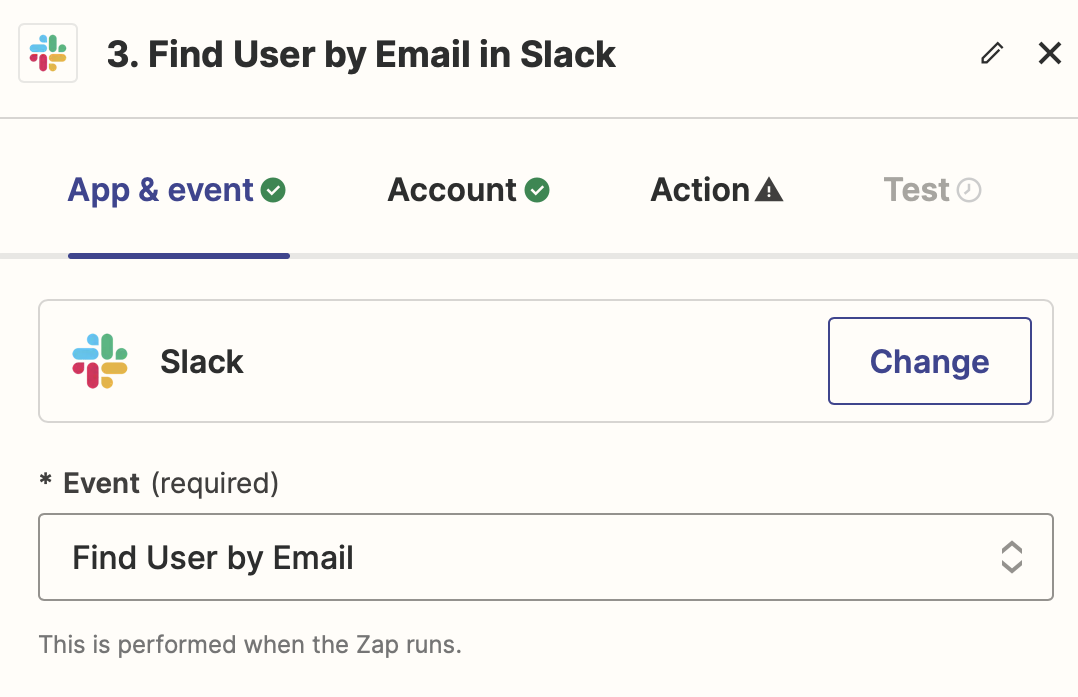
Go through the next step to associate your Slack workspace with your account. Then, in the Action step, find the email column in your Google Form that was saved automatically upon form submission (using the Collect email addresses option).
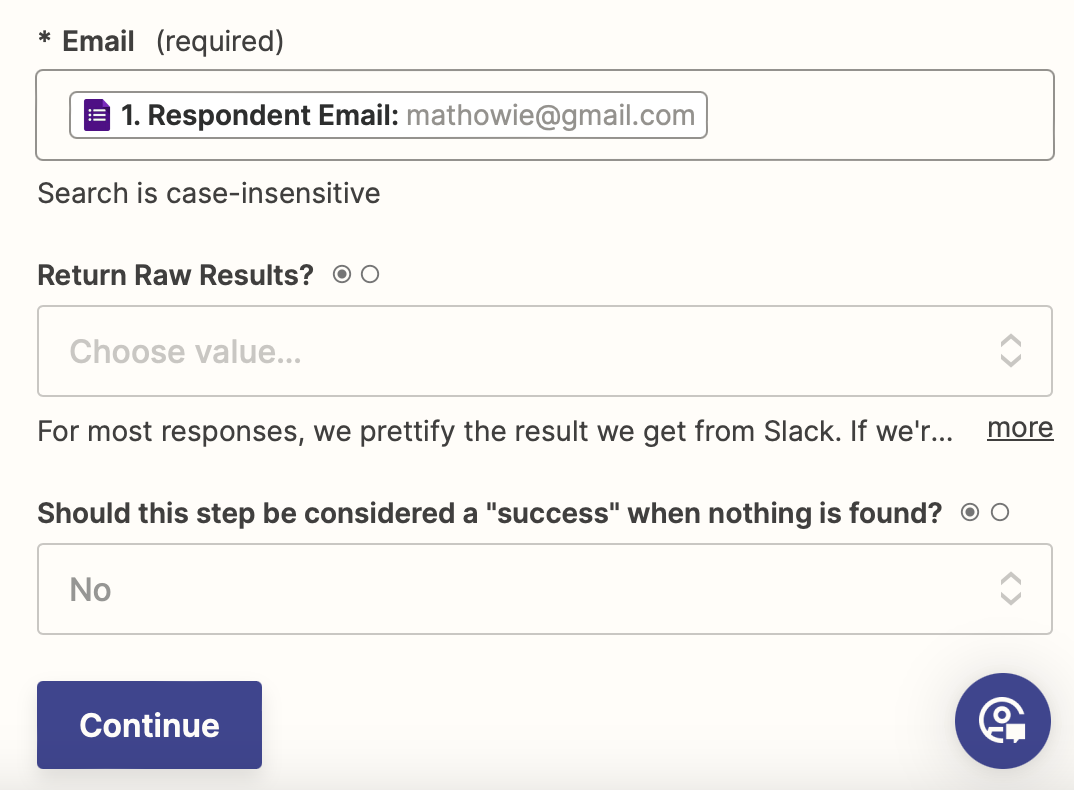
Test it all out and proceed when it's working.
Add a fourth step to your Zap to Send a Direct Message in Slack.
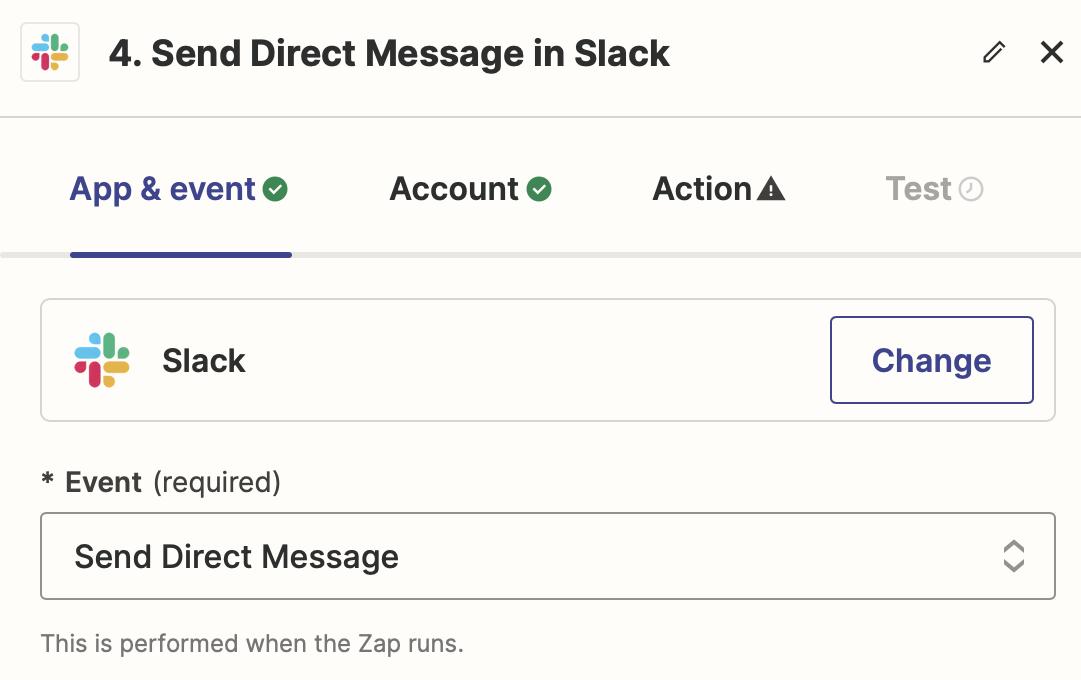
Next, customize the To Username field so it sends the message to the username found in the previous email-lookup step, then add the title from the Google Doc template and a link to view it in the Message Text. Customize any other aspects of the DM as you wish, then test it out to make sure it all works.
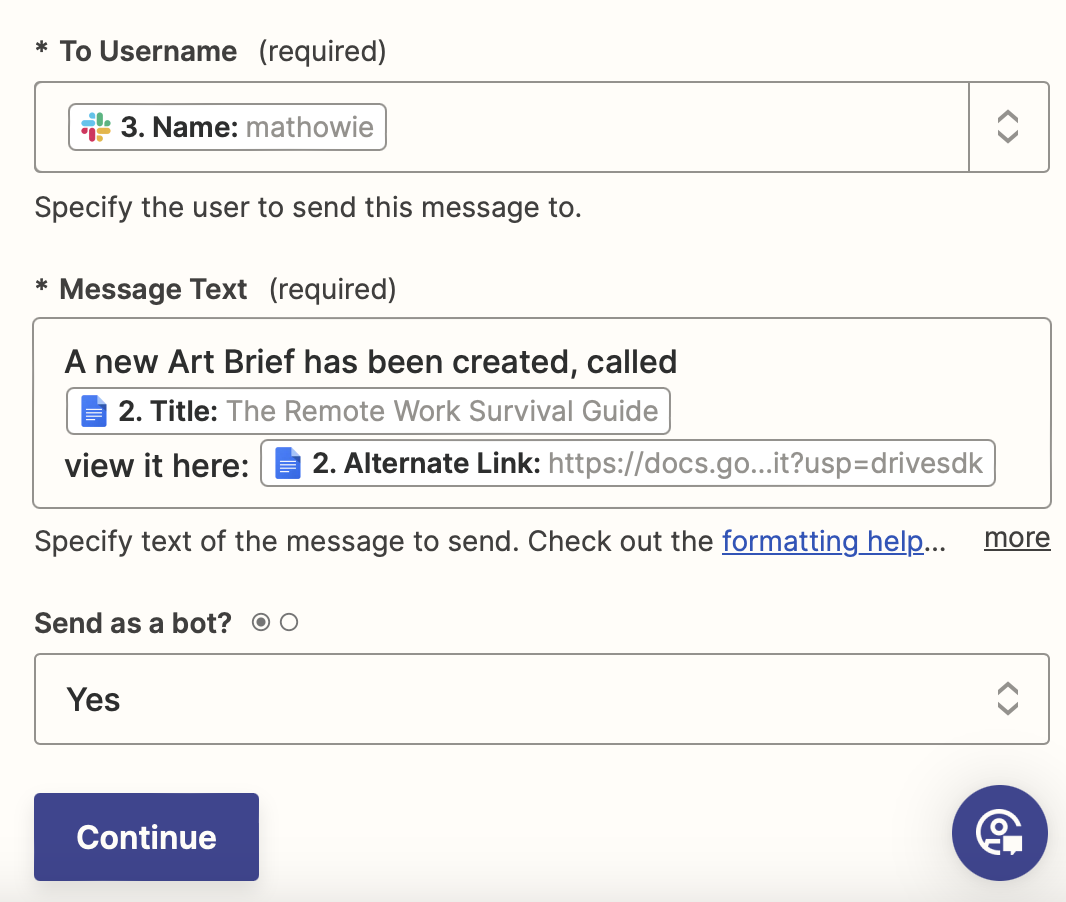
You're done!
If everything is working, any time someone fills out answers in your newly created Google Form, moments later they'll get a DM in Slack with a link to their Google document pre-filled out from their form responses. From there, they can share it out wherever needed.
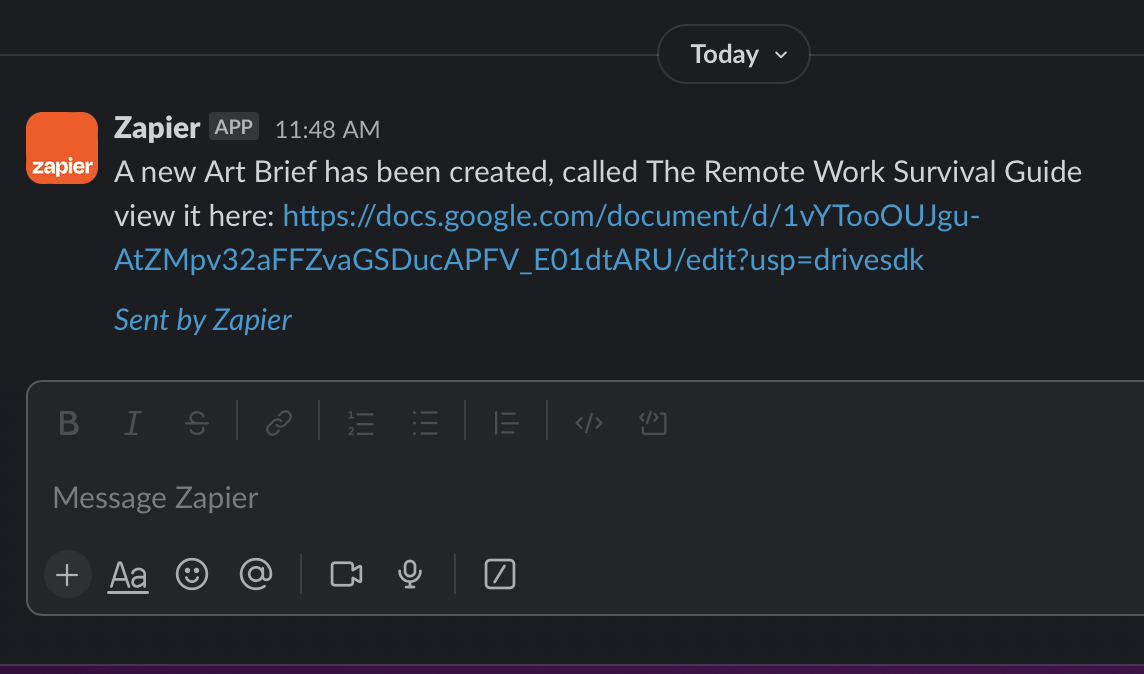
The doc linked in the DM will contain all the formatting and display settings you used in your template. It will be automatically viewable and readable by anyone with the URL, so it can be passed along to anyone who needs it—in Slack's case, that included art directors, illustrators, or contract artists.

This Zap can be easily modified to send the completed template into a Slack channel instead of a DM. Or you could add another step that adds it to a new Asana task or another project management tool as a supporting document for project managers to follow.
However you use them, automating templates can help you replace repetitive processes in your company with something faster and easier.
Read more:
This was a guest post from Matt Haughey, former Senior Writer at Slack. Want to see your work on the Zapier blog? Check out our guidelines and get in touch.
This article was originally published in April 2020 and was most recently updated in April 2024.
Get productivity tips delivered straight to your inbox
We’ll email you 1-3 times per week—and never share your information.

Matt Haughey is an early blogging pioneer who spent 7 years at Slack and is currently working as a freelance technology writer.